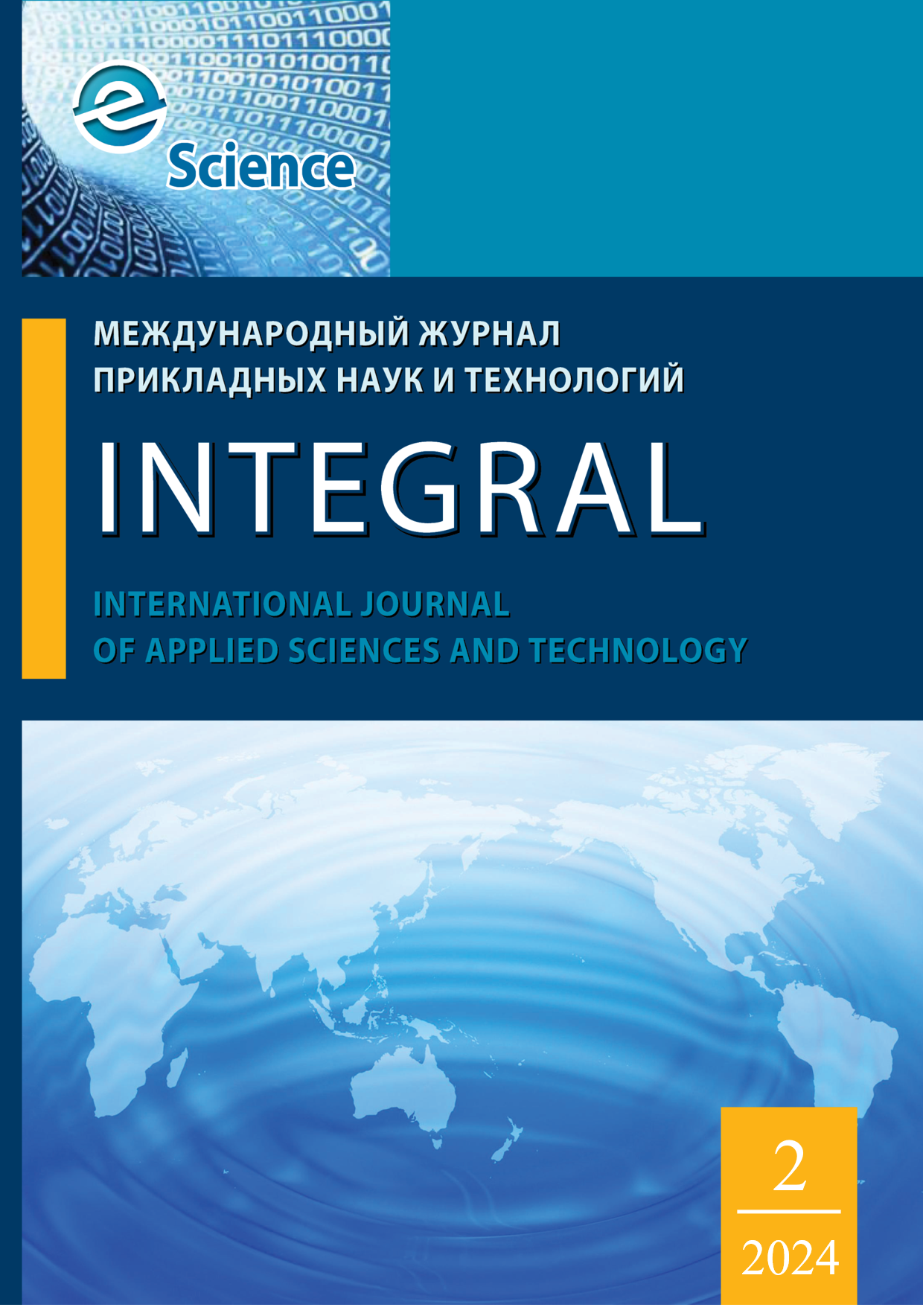Подчеркивается важность ГИС в различных областях, включая картографирование, отслеживание транспорта и мониторинг качества воздуха. Это исследование направлено на разработку географической информационной системы (ГИС), адаптированной к городской среде, что удовлетворяет потребность в эффективной и адаптируемой системе, способной поддерживать процесс принятия решений и планирования в городских условиях. Предлагаемая ГИС-система предназначена для обработки и анализа больших объемов данных, охватывающих как геопространственную, так и негеопространственную информацию, с учетом таких факторов, как дорожное движение и рельеф местности. Предполагается, что система будет масштабируемой, модульной и настраиваемой, чтобы соответствовать разнообразным требованиям различных городских условий. В этом исследовании я рассмотрю плюсы и минусы существующих работ, методов и решений в разработке современных геоинформационных систем, а также предложу и проанализирую лучший подход для создания мощного инструмента пространственной ориентации в городской среде.
ГИС-моделирование, городские условия, информационные технологии.
- INTRODUCTION
In today’s urban environments, the need for an efficient and suitable Geographic Information System (GIS) is widespread. The objective of this research is to develop a GIS system capable of aiding people in navigating city conditions, taking into account factors such as traffic and relief. The system should possess the ability to process and analyze large volumes of data, including both geospatial and non-geospatial data, to facilitate decision-making and planning in urban areas. Furthermore, the system should be designed to be scalable, modular, and easily customizable to accommodate the require- ments of different urban environments.
GIS has become increasingly indispensable across various domains, including mapping, transportation tracking, and air quality monitoring. Gu Kuiying emphasizes the importance of integrating multiple objectives into decision-making processes within urban environments [1]. To address this issue, a system is proposed that employs geospatial and non-geospatial data to optimize the location and delivery of location-based services. Another noteworthy approach to utilizing GIS in urban condi- tions was presented by Kohn Tobias [2]. Their work introduces a GIS-based decision support system for the installation of underground pipelines in urban environments. Gerina Federica describes an intriguing method that combines dynamic patterns and machine learning in Python [3]. The article presents the development of a system that employs air quality sensor data to identify cooking activities in a kitchen setting, with the aim of assisting individuals in tracking their food intake and maintaining a food journal. The article outlines the methodol- ogy used for data preprocessing and analysis, including feature extraction and selection, as well as the application of machine learning algorithms for activity recognition. Fayzrakhmanov Rustam Abubakirovich proposes the creation of a universal geographic information system that utilizes machine learning and natural language processing techniques to analyze literary works [4]. The paper details the design and implementation of a Literary Mapping Geoinformation System (LMGS) that enables users to visualize and explore the spatial distribution of literary works, as well as analyze the relationships between literary works and their geographical locations.
The absence of in-depth examination or comparison of the proposed framework with current GIS development method- ologies is a limitation shared by all of the papers that were discussed, which makes it challenging to assess the innovation or efficacy of the suggested methodology. Moreover, there is a lot of data, maitaining all of the conditions, including traffic and respite, is challenging.
- METHODOLOGY
Data Collection. The first step involves identifying and col- lecting relevant data sources for modeling spreading concen- tration. This includes data such as air quality measurements, meteorological data, and traffic data. The data will be acquired from reliable sources and subjected to preprocessing and quality control procedures to ensure accuracy and consistency. The model for the Data Collection in general looks like fetching all of the raw data from the different types of sources, such as sensors, user clicks or manual data inserting, then collected data load to database, for example centralised data warehouse[Fig. 1]. In this storage, manipulations, classifying, model training is used. After all of the process, developers can load data to interface to give output about traffic, concetration, e.t.c.
Spatial Analysis and Modeling. Spatial analysis techniques will be employed to generate continuous concentration sur- faces. This will involve utilizing spatial interpolation methods to estimate concentration values at unmeasured locations based on the available data. Additionally, various data layers such as land use and transportation networks will be integrated to


Fig. 1. GIS Data Model.

evaluate their influence on spreading concentration. Mathemat- ical models or algorithms will be developed and calibrated to predict spreading concentration accurately. As a tool for Spatial Analysis and Modeling there used open-source python library PySAL[Fig. 2]. To create continuous concentration surfaces, PySAL provides interpolation techniques including inverse distance weighting (IDW)[Fig. 3] and Kriging[Fig. 4]. These techniques can be used to extrapolate concentration levels from measured places to unmeasured ones.
Fig. 2. PySAL for Spatial Analysis and Modeling.
GIS Development. A customized GIS system will be designed and implemented to facilitate modeling of spread- ing concentration. The GIS system will include a database for storing and managing the collected data. User-friendly interfaces and visualization tools will be developed to support data exploration and analysis. GIS functionalities, includ- ing data querying, mapping, and spatial analysis, will be incorporated into the system. Real-time data feeds will be integrated to enable dynamic modeling and visualization ca- pabilities. GIS Development Design step involves identifying and collecting relevant data sources for modeling spreading
Fig. 3. Inverse Distance Weighting.
Fig. 4. Kriging.
concentration[Fig. 5]. It may include air quality measurements, meteorological data, traffic data, and other relevant spatial and non-spatial data. The collected data will serve as inputs for the GIS system.
Model Evaluation and Validation. The developed model will be evaluated and validated to assess its performance. Evaluation metrics such as accuracy, precision, and error analysis will be employed to gauge the model’s reliability and effectiveness. Model outputs will be compared against observed data or reference datasets to validate the results. Sensitivity analysis will be conducted to understand the impact of input parameters and assumptions on the model outcomes.
Case Study and Application. A specific urban area or case study site will be selected to apply the developed GIS system for simulating spreading concentration. The system will be utilized to model and analyze the spreading concentration patterns in the chosen area. The results will be analyzed and in- terpreted to gain insights into the concentration dynamics and potential implications for urban planning and environmental management.

Fig. 5. GIS Flowchart.
- EXPERIMENTS AND RESULTS
The aim of this article is to research the area of GIS using python and machine learning, next is to develop GIS that will satisfy all of the city conditions.
To achieve this goal, there is a need of conducting research on the latest GIS technologies and data processing methods, as well as on the specific challenges of urban environments. Also I need to develop and test prototypes of the GIS system, using real-world data from urban environments.
A lot of work has be done to research existing papers, identify pros and cons, find weak points and develop better solution. There are a number of significant tasks and actions that can be carried out in the context of the thesis on the creation of GIS for modeling spreading concentration in city settings. First, extensive data collection initiatives might be started to compile pertinent information such measurements of the air quality, weather data, and traffic data. The basis for modeling and analysis would be this data. To guarantee data quality and consistency, data pretreatment procedures such as cleaning, integration, and transformation should then be carried out. After the data has been prepared, a solid GIS system that uses modeling and geographical analytic methods can be developed. In order to do this, spatial interpolation techniques must be used to create continuous concentration surfaces. Additionally, extra spatial layers must be integrated to fully account for the influence of numerous elements, and mathematical models must be calibrated to make precise predictions.
The results of thesis on provide valuable insights into the dynamics of spreading concentration and its implications for urban environments. Through research, there were uncover distinct patterns of spreading concentration, identifying areas of high concentration or hotspots within the selected urban area or case study site. These concentration patterns can help in understanding the spatial distribution of pollution or other relevant factors impacting the environment.
Moreover, this research may shed light on the influence of various spatial factors on spreading concentration. By grating data layers such as land use, transportation networks, and other relevant variables, there can be explored correlations and relationships between these factors and concentration patterns. This analysis can offer valuable information for urban planning, environmental management, and decision-making processes.
Additionally, the evaluation of the performance and accu- racy of developed models is crucial. By assessing the effec- tiveness of spatial interpolation methods and the performance of mathematical models, it can determine the reliability of calculated predictions. This evaluation helps in understanding the strengths and limitations of the models, and their ability to capture concentration dynamics accurately. The expected results of this thesis is a fully functional GIS system that can be used to support decision-making and planning in urban environments. The system should be capable of processing and analyzing large volumes of data, including geospatial and non-geospatial data, and should be scalable and customizable to meet the needs of different urban environments. The system should also incorporate the latest advances in machine learn- ing and artificial intelligence, to support more accurate and efficient data analysis and decision-making[Fig. 6].

Fig. 6. Prototype of GIS App.
- CONCLUSION
In conclusion, this thesis lays the foundation for further advancements in GIS development for modeling spreading concentration in city conditions. By addressing the identified limitations and incorporating future research directions, the field can benefit from improved methodologies, more accu- rate predictions, and enhanced decision support systems for sustainable urban planning and environmental management.
In terms of future work, several avenues can be explored. Firstly, expanding the scope of the research to include more diverse urban environments and case studies would enhance the generalizability of the findings. Additionally, incorporating real-time data streams and advanced predictive modeling tech- niques can improve the accuracy and timeliness of spreading concentration predictions. Moreover, integrating stakeholder engagement and participatory approaches can enhance the usability and acceptance of the GIS system among decision- makers and urban planners.
1. Гу Куин, Чжао Ляньмин и Лю Шаокунь, ”Прогнозирование качества воздуха в Шэньчжэне на основе алгоритма нейронной сети”, 2020.
2. Тобиас Кон, Гвидо Ван Россум, Гари Брандт из Bucher и Иван Левкивский, ”Динамическое сопоставление шаблонов с помощью Python”, 2020
3. Левкивский Иван, Масса Сильвия М., Мои Франческа, Рефориато Рекуперо Диего и Рибони Даниэле, ”Распознавание процессов приготовления пищи с помощью данных датчиков качества воздуха для поддержки ведения журнала пищевых продуктов”, 2020 г.
4. Файзрахманов Рустам Абубакирович, Фоминых Полина Юрьевна, Курушин Даниил Сергеевич, Орлова Екатерина Дмитриевна, Соболева Ольга Владимировна и Яруллин Денис Владимирович, ”Машинное обучение для построения литературной картографической геоинформационной системы”, 2020
5. Чжан К., Чжоу Ю., Ву Дж., ”Система поддержки принятия решений на основе ГИС для управления качеством воздуха в городских районах”, 2011 г.
6. Чепель О., Боррего С., ”Интеграция ГИС и моделей качества воздуха для оценки воздействия загрязнения воздуха в городской среде”, 2006 г.
7. Бриггс Д. Дж., де Хоог К., Гулливер Дж., ”Пространственное моделирование воздействия загрязнения воздуха в городах в ГИС: новые подходы к измерению загрязнения воздуха в городской среде”, 2000
8. Юань К., Бауэр М. Э., ”Картографирование загрязнения воздуха в городах с использованием ГИС: подход, основанный на регрессии, с пространственными переменными”, 2007













